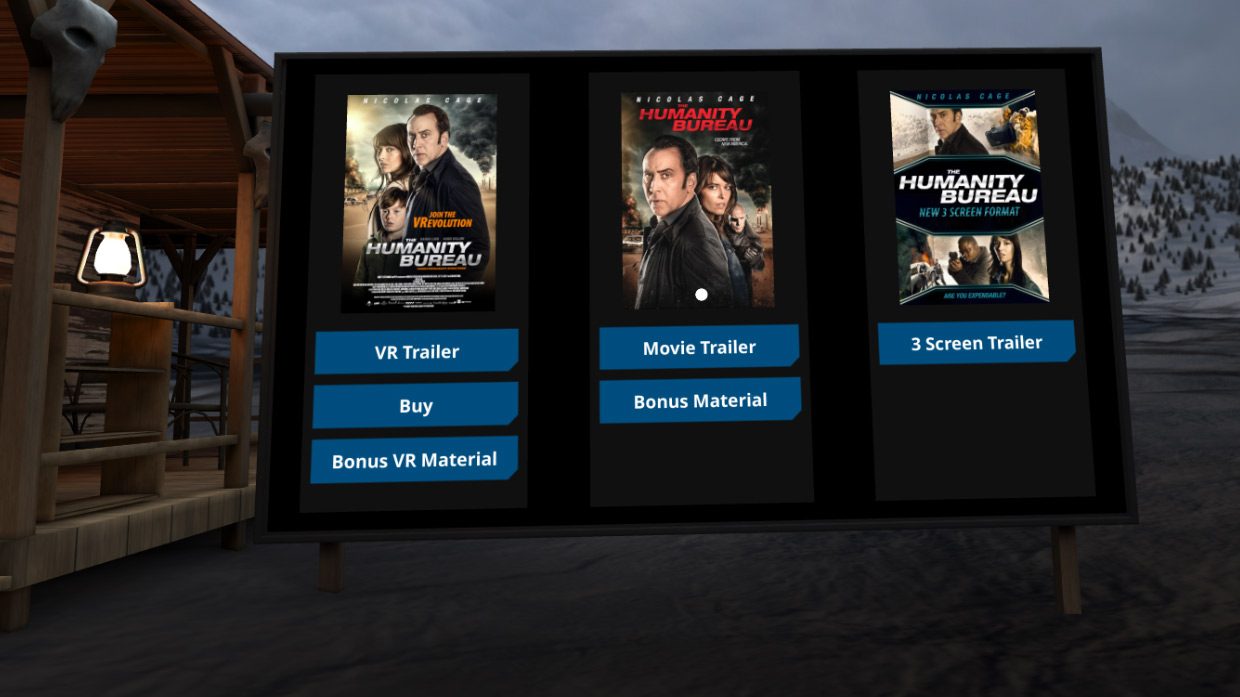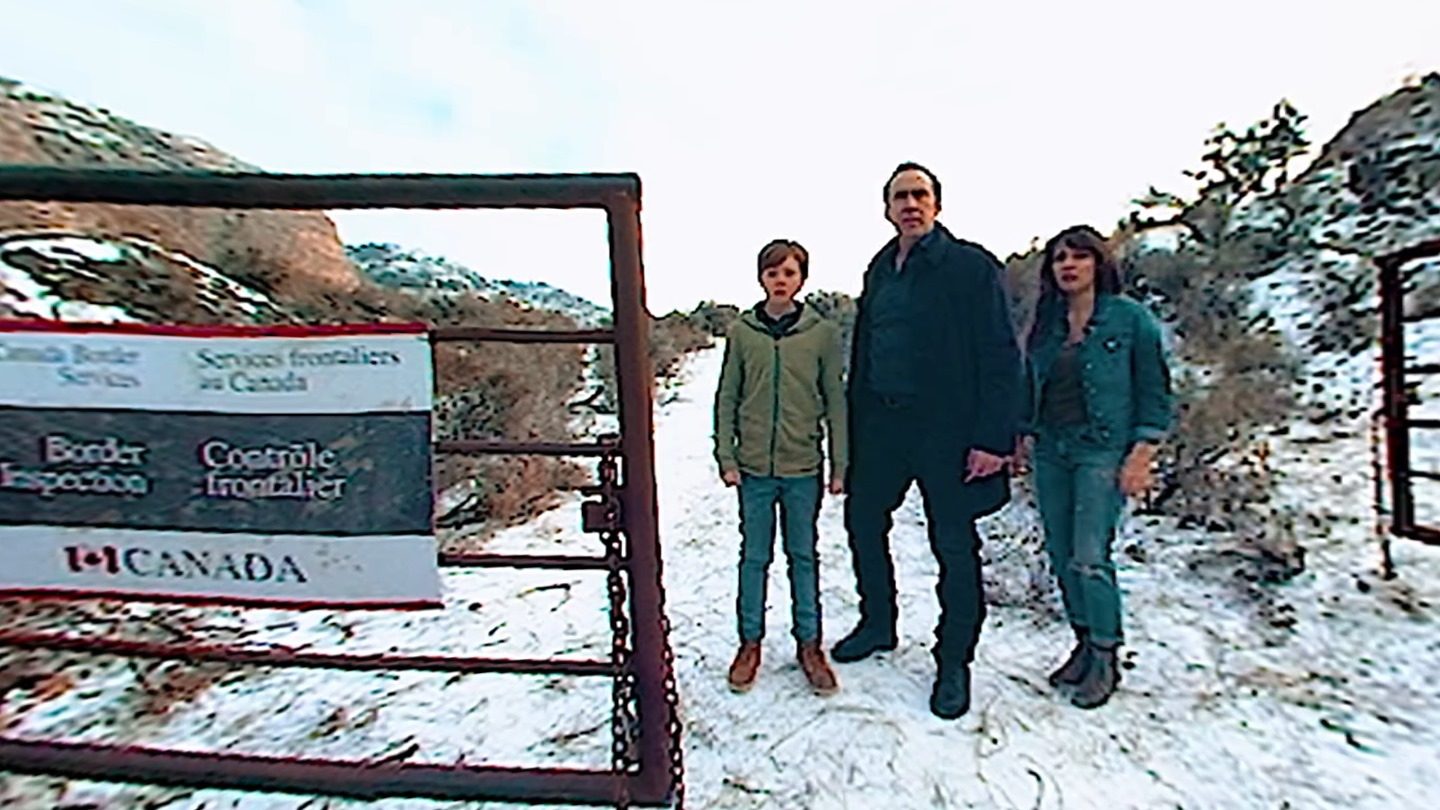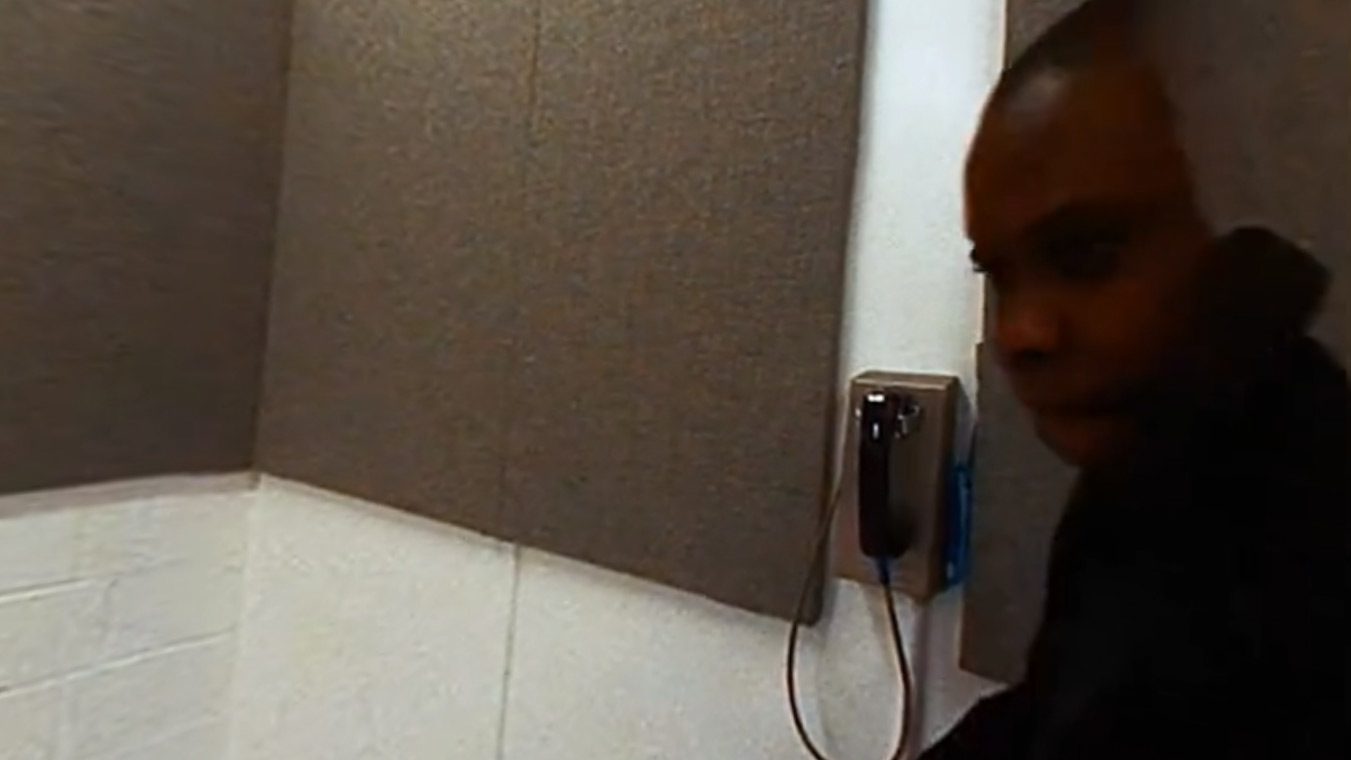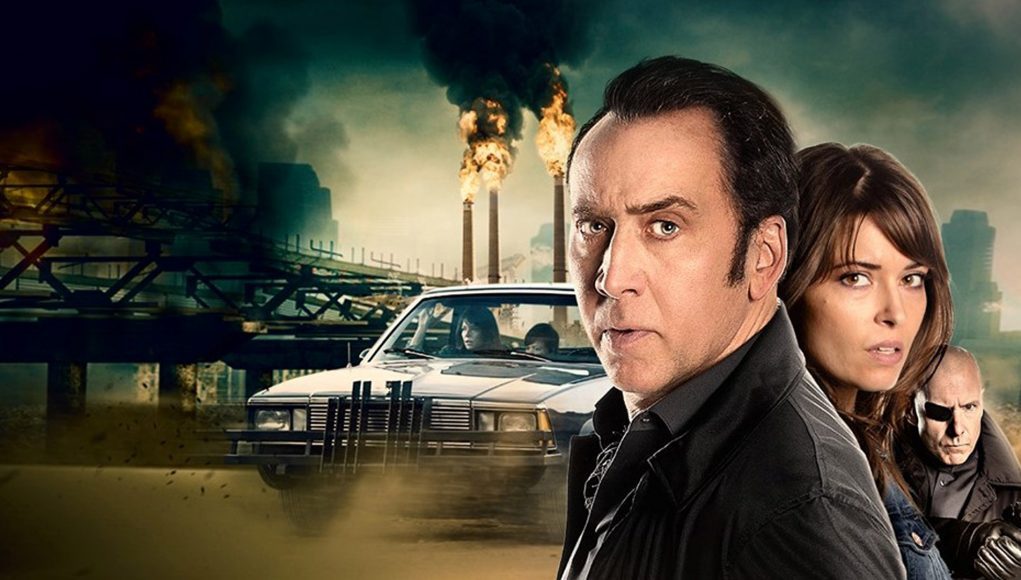As spring arrives and the swallows come back to Capistrano, so too is it time to endure another annual low-budget film featuring Nicolas Cage. This time, the crew behind Cage’s latest film The Humanity Bureau (2018) have thrown a 360 camera in the mix in an attempt to generate a VR app that launched on nearly every VR platform prior to the film’s April 6th theatrical release.
While it could have been a run-of-the-mill collection of behind-the-scenes commentary or a rendered scene showing off some of the universe’s 2030-era future tech, the creators went a different route by promising an honest-to-goodness VR film featuring Nic Cage with its own narrative to boot, but what transpired ultimately shaped up to be one of the worst VR tie-ins since Jumanji VR. Not only that, but the producers behind The Humanity Bureau’s low-quality, 15-minute 360 narrative cheesefest are charging you a non-refundable $5 for the honors.
To be fair, there’s a few warning signs here when starting up the free app, which can be downloaded on Gear VR, Cardboard, Oculus Rift and HTC Vive (the app is free, but the real content inside isn’t).

Heading into the free VR trailer portion, you’re given a taste of what’s to come; mediocre acting, bad dialogue, bad lighting, bad positional audio, all of which sums up to be one of the most shameful quality 360 films I’ve seen recently. A lesser sin; none of the menus allow for positional tracking and only give you a gaze cursor to make selections – a decidedly minor quibble for PC VR users. Below is an actual promotional image for the VR experience.

Pushing past these obvious warning signs in an attempt to see for myself what the creators call a “ground breaking virtual reality companion piece,” I encountered all of this and more after inserting my PIN and finalizing the $5 payment. By “the most shameful quality 360 film I’ve seen recently,” I mean there’s zero attempt to remedy or otherwise act-around stitching lines, it suffers incredibly grainy indoor scenes due to poor lighting, no high-dynamic range resulting in poor contrast, and nearly every scene blares a minimal understanding of how to treat the viewer’s point of view. All of this is when downloading (not streaming) the highest quality version of each video, which averaged about 300 MB per episode.
You’ll find yourself strapped to the floorboard of Cage’s shaky, claustrophobic El Camino, a teetering aerial shot from a drone, or to an unlevel surface so the world is slightly off kilter. It all feels like a high school art project, or a first-pass story board that was meant for greater polish, greater cameras, better actors, better optical stabilization, etc.

Composed of a total of 7 two-minute episodes, you get a few grainy, barely audible minutes with Nicolas Cage; Cage driving his car, Cage delivering a few tired lines to the film’s antagonist Mr. Evil McEyepatch, and that’s really about it. The rest is a smattering of the film’s other characters acting in what the production studio says is “alternative storylines that co-exist with the feature film.” From what I gather, Mrs. Lovely McLove-interest has a kid, and everyone wants him dead for some reason. See for yourself below (spoiler alert: below is the last two-minute chapter).
Remember, Oculus doesn’t offer refunds on movies, bundles, content purchased as part of a bundle, or content downloaded or purchased inside of apps – meaning your $5 will be gone the moment you put in your PIN regardless of how unhappy you are with the end product. Don’t say we didn’t tell you so.
Not all VR film promos are this bad, or as bad as Jumanji VR, but I have to admit that price plays a part in how I perceive what essentially is as an extended commercial for a movie. While $5 isn’t a lot of money, you need to feel like you’re getting something in return for it to be a fair trade, and a measly 15-minute 360 afterthought isn’t a fair trade for any amount of money I’m afraid to say – especially when the content hides behind a free app so you’re ineligible for a refund.
Quick reminder: this wasn’t handed off to some outside company, as the film’s actual writer Dave Schultz and director Rob King created this VR experience—making for a pretty indicative look at what the feature film could have to offer.







